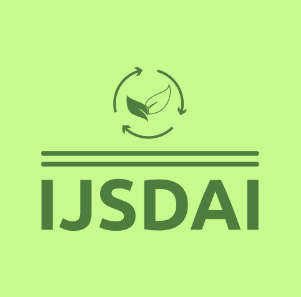Smart Diagnostics: Exploring AI-Based Models for Disease Forecasting and Timely Identification
Abstract
This paper proposes a novel system for predicting diseases, utilizing machine learning methods to facilitate early identification and elevate patient care quality. This study presents an advanced smart disease prediction system that harnesses machine learning to improve early diagnosis and optimize healthcare outcomes. As chronic and lifestyle-related diseases become more prevalent, conventional diagnostic approaches often struggle with speed and accuracy. To address these challenges, the proposed system employs the Random Forest algorithm to analyze patient symptoms and medical history for disease prediction. The dataset includes a diverse range of patient records, capturing symptom patterns and corresponding diagnoses. Experimental findings confirm the system’s effectiveness across various test scenarios, highlighting its potential to support healthcare professionals in making timely decisions and delivering personalized patient care
References
Esteva, A., Kuprel, B., Novoa, R. A., Koong, A. C., Swetter, S. M., Blau, H. M., & Thrun, S. (2017). Dermatologist-level classification of skin cancer with deep neural networks. Nature, 542(7639), 115–118. https://doi.org/10.1038/nature21056
Topol, E. J. (2019). High-performance medicine: The convergence of human and artificial intelligence. Nature Medicine, 25(1), 44–56. https://doi.org/10.1038/s41591-018-0300-7
Rajkomar, A., Dean, J., & Kohane, I. (2019). Machine learning in medicine. New England Journal of Medicine, 380(14), 1347–1358. https://doi.org/10.1056/NEJMra1814259
Silver, D., Schrittwieser, J., Simonyan, K., Antonoglou, I., Huang, A., Guez, A., Hubert, T., Baker, L., Lai, M., Bolton, A., Chen, Y., Lillicrap, T., Hui, F., Sifre, L., van den Driessche, G., Graepel, T., & Hassabis, D. (2017). Mastering the game of Go without human knowledge. Nature, 550(7676), 354–359. https://doi.org/10.1038/nature24270
LeCun, Y., Bengio, Y., & Hinton, G. (2015). Deep learning. Nature, 521(7553), 436–444. https://doi.org/10.1038/nature14539
Litjens, G., Kooi, T., Bejnordi, B. E., Setio, A. A. A., Ciompi, F., Ghafoorian, M., van der Laak, J. A. W. M., van Ginneken, B., & Sánchez, C. I. (2017). A survey on deep learning in medical image analysis. Medical Image Analysis, 42, 60–88. https://doi.org/10.1016/j.media.2017.07.005
Krittanawong, C., Zhang, H., Wang, Z., Aydar, M., & Kitai, T. (2017). Artificial intelligence in precision cardiovascular medicine. Journal of the American College of Cardiology, 69(21), 2657–2664. https://doi.org/10.1016/j.jacc.2017.03.571
Chen, J. H., & Asch, S. M. (2017). Machine learning and prediction in medicine— Beyond the peak of inflated expectations. New England Journal of Medicine, 376(26), 2507–2509. https://doi.org/10.1056/NEJMp1702071
London, A. J. (2019). Artificial intelligence and black-box medical decisions: Accuracy versus explainability. Hastings Center Report, 49(1), 15–21. https://doi.org/10.1002/hast.973
Miotto, R., Wang, F., Wang, S., Jiang, X., & Dudley, J. T. (2018). Deep learning for healthcare: Review, opportunities and challenges. Briefings in Bioinformatics, 19(6), 1236–1246. https://doi.org/10.1093/bib/bbx044
Johnson, A. E. W., Pollard, T. J., Shen, L., Lehman, L. H., Feng, M., Ghassemi,
M., Moody, B., Szolovits, P., Celi, L. A., & Mark, R. G. (2016). MIMIC-III, a freely accessible critical care database. Scientific Data, 3(1), Article 160035. https://doi.org/10.1038/sdata.2016.35
Beam, A. L., & Kohane, I. S. (2018). Big data and machine learning in healthcare.
JAMA, 319(13), 1317–1318. https://doi.org/10.1001/jama.2017.18391
Obermeyer, Z., & Emanuel, E. J. (2016). Predicting the future—Big data, machine learning, and clinical medicine. New England Journal of Medicine, 375(13), 1216– 1219. https://doi.org/10.1056/NEJMp1606181
Downloads
Published
Issue
Section
License
Copyright (c) 2025 International Journal of Sustainable Development Through AI, ML and IoT

This work is licensed under a Creative Commons Attribution-NonCommercial-NoDerivatives 4.0 International License.

